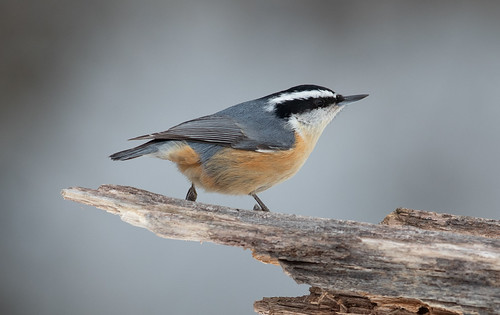This week, I saw several adult male hummingbirds, baby House Wrens, Red-eyed Vireos and American Crows begging for food from their parents, and I heard Red-eyed Vireos, cardinals, and even a Brown Thrasher singing actual songs, all reminding me that August is very much the heart of summer. But I also read reports of lots of shorebirds turning up here and there, including at Park Point in Duluth. We’ve already had a fine nighthawk migration. Up until the 24th, I’d seen only a few—most of the ones other birders were reporting seemed to be moving further inland. But on Monday, I saw hundreds of them coursing overhead, filling my heart with joy. Cedar Waxwings quietly pigged out on berries and flying insects, mostly in the yard and alley kitty-corner from mine. I might see a dozen or two, and then suddenly one or two hundred took wing and I realized how many had been tucked into those trees and shrubs unseen. They’re generally headed south, but mosey along at a leisurely pace, often backtracking. In this season of abundance, what's the hurry?
A host of birds that do not nest on Peabody Street—Scarlet Tanagers, Baltimore Orioles, and several species of warblers—have materialized in my backyard to pig out on berries and insects and to drink and bathe, the first time I've seen these splendid birds since May. So far, the biggest day of bird happenings this month was August 24, but as I write this on August 25, I’ve seen a host of Empidonax flycatchers, a phoebe, and a kingbird, and the day is young—by the time you read this blog entry, the 25th may have surpassed the 24th, and migration is far from its peak.
Right now I’m hearing just a few short bouts of singing each day from the vireos and my cardinal—family responsibilities get in the way of their performance time. In the past couple of days, I’ve been hearing my splendid Brown Thrasher breaking into a soft whisper song a few times a day. It’s nothing like the full-throated affair that made him so enticing to his mate back in the spring, and I wonder what the function of it is. Cornell’s Birds of the World makes a reference to a soft autumn song, but without any details. I’ve noticed my bird making imitations of a Ruby-crowned Kinglet’s song and the metallic chink! of a Rose-breasted Grosbeak. So far I haven’t recorded his singing—the timing is unpredictable—and haven’t heard enough to know if he’s making some of the same imitations I heard in spring. If not, he may be a different bird, or his singing now may be just to practice new additions to his repertoire. I love that no matter how close I pay attention, I can’t figure a lot of this out. People are rather arrogant about how much we think we know about birds.
Most of the time, it’s quiet out there, but even when no birds are singing, it’s hardly silent. My neighborhood Red-breasted Nuthatches produced a bumper crop of new little nuthatches this year, and all of them are beeping away.
An unusually large number of chickadees fledged, too. Now, as winter flocks start getting organized, the young chickadees are doing what they can to appear bigger and tougher while making their annoyed gargle call, hoping to finagle a higher position in the flock hierarchy. So far only other babies seem to even notice—the adults are already assured of their positions in the flock, so when confronted with one of these young upstarts, they roll their eyes and fly off.
I’ll be giving a Zoom presentation about migration, and the different strategies different species have evolved, and why what works for one bird doesn’t for another, on September 1 at 7 pm Central Daylight Time. This week I’ll be sending an invitation to everyone who has donated via Patreon to support my work. If you can’t donate but would like to attend this otherwise free event, send me an email before August 29 and I’ll send you an invitation. (This originally said to send it before September 29, but Lisa Johnson, not suffering from New Baby Brain, told me about the error.)





